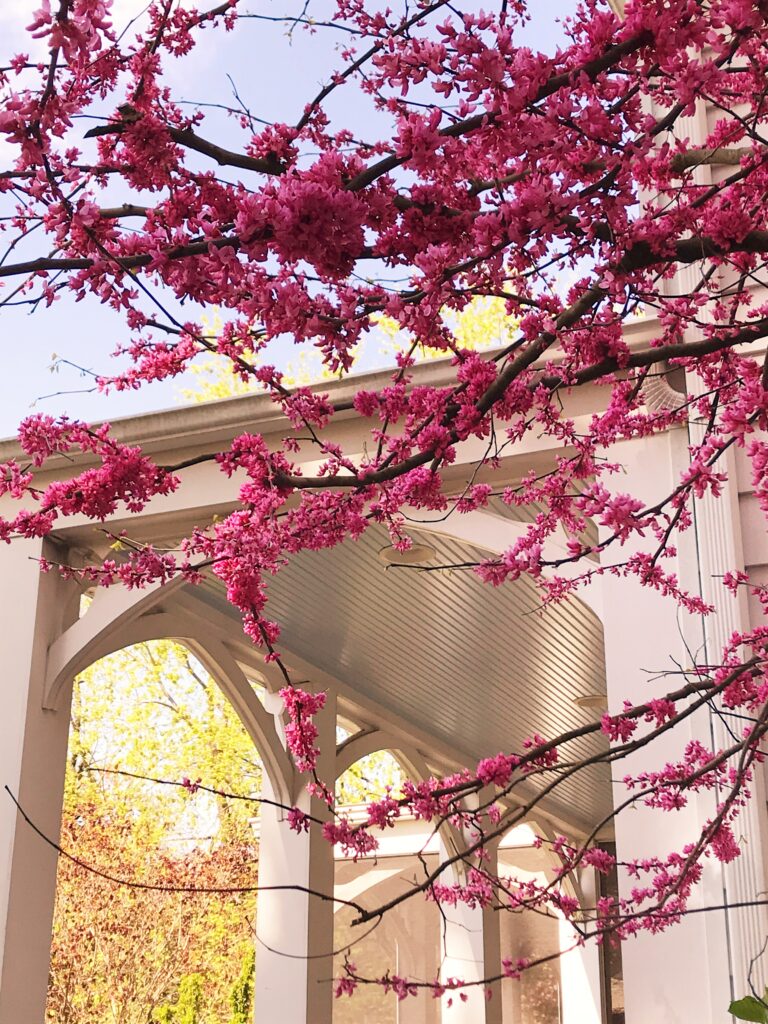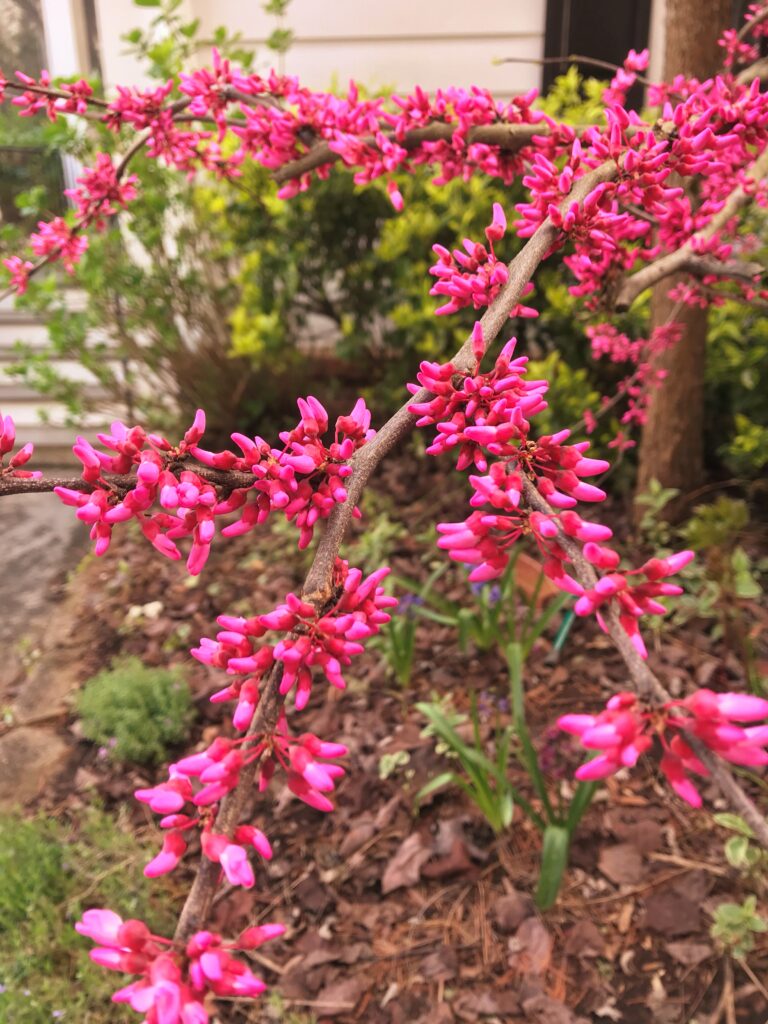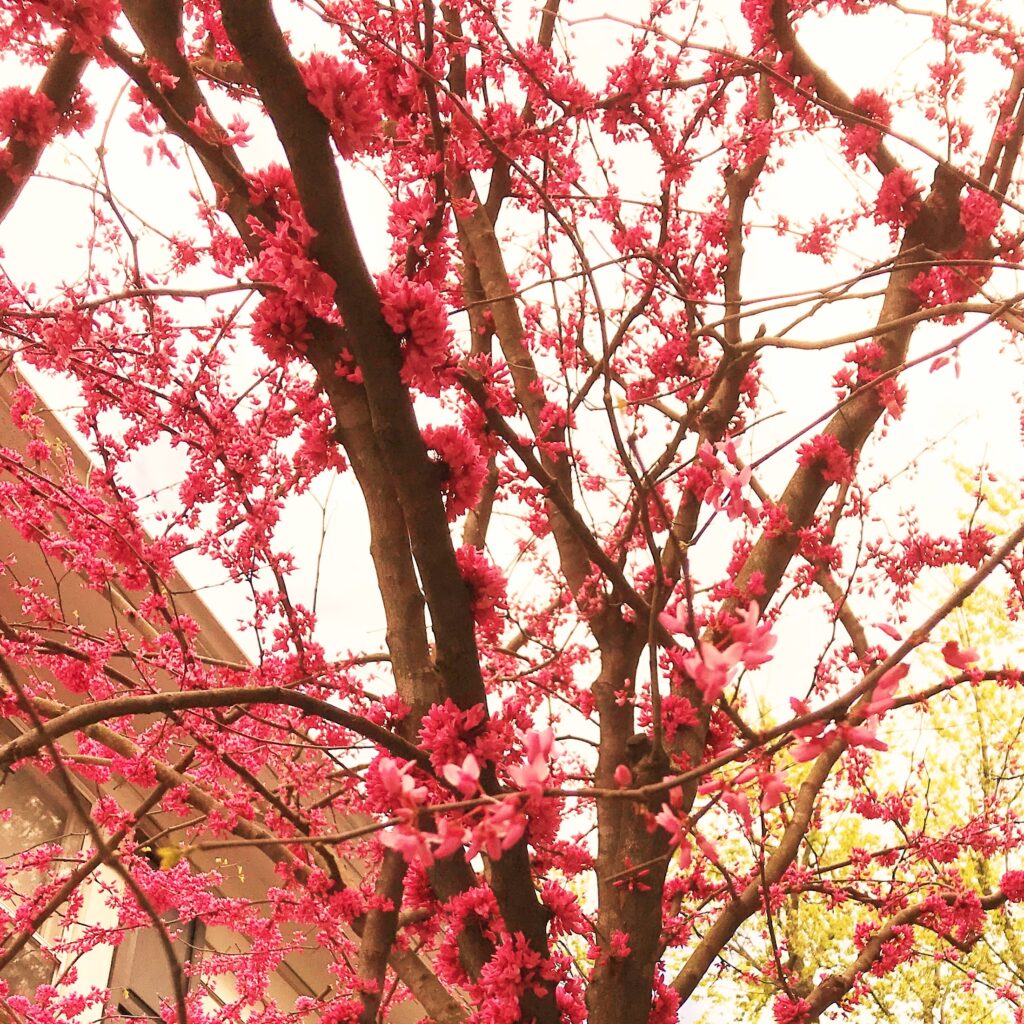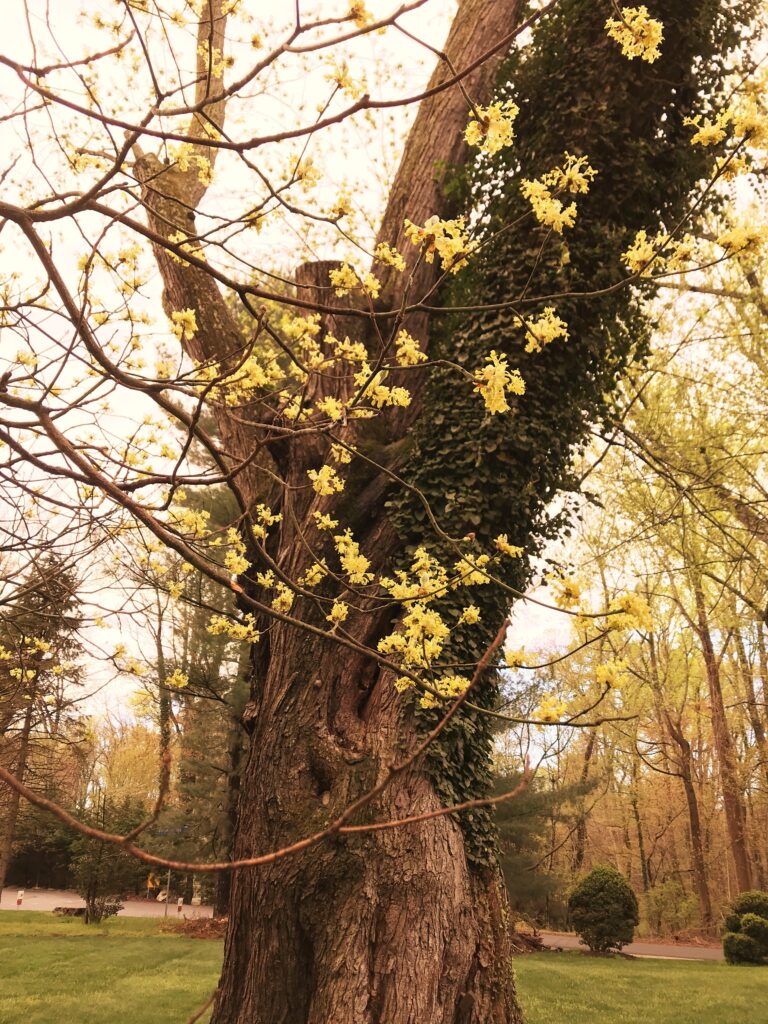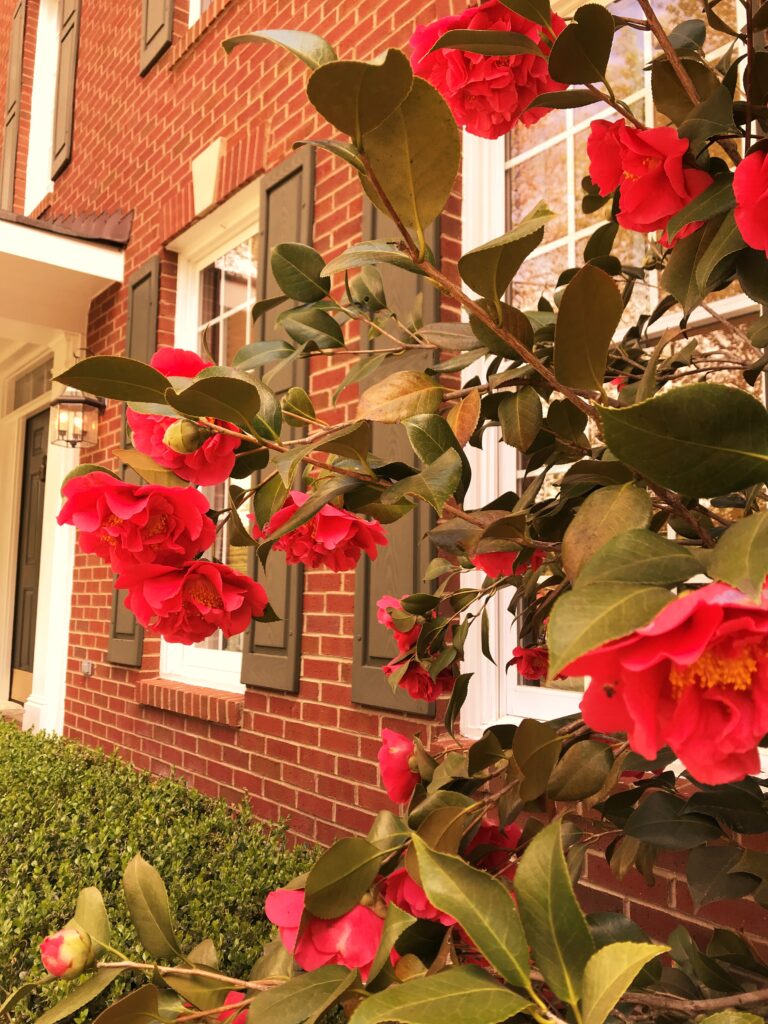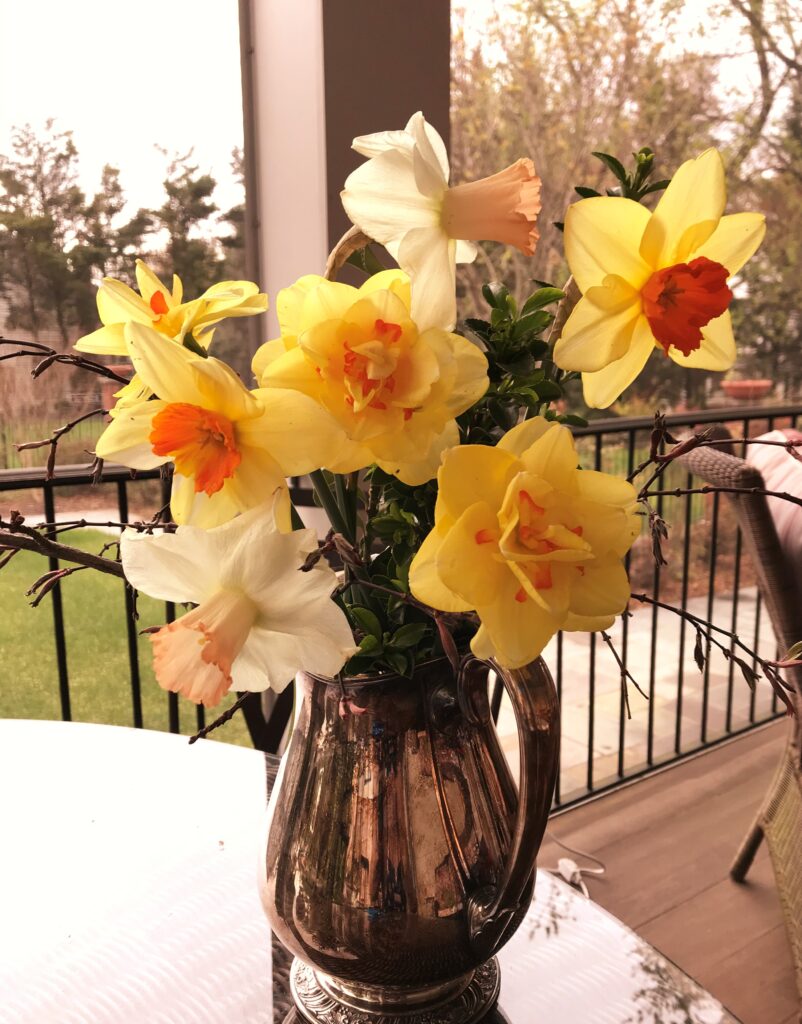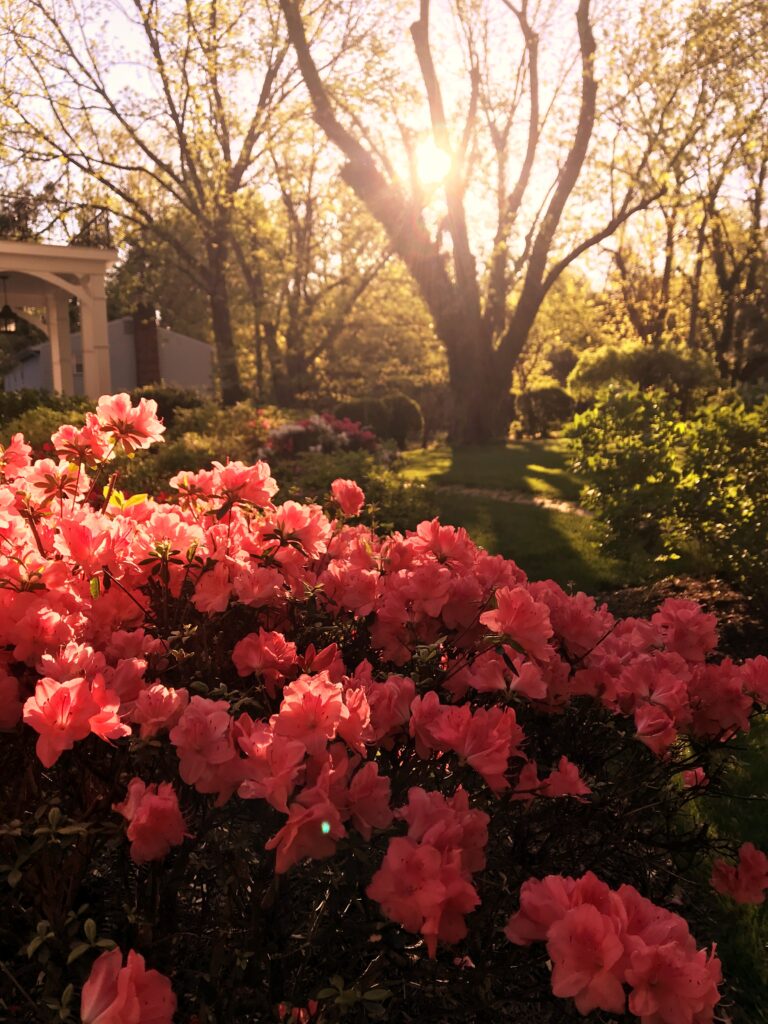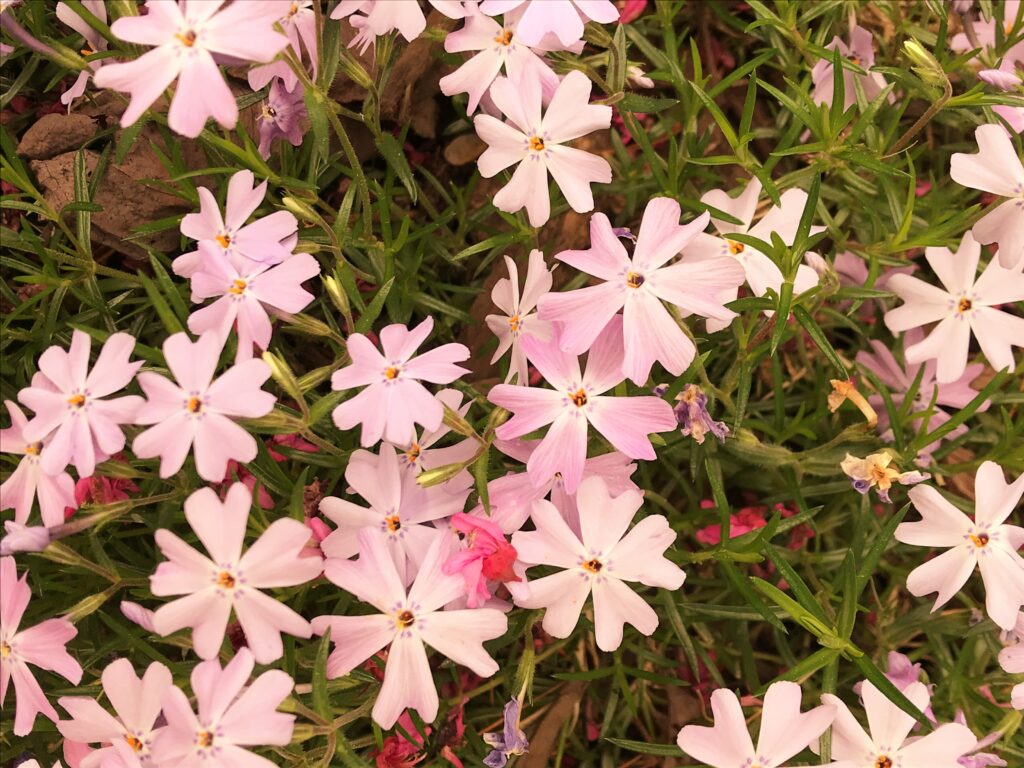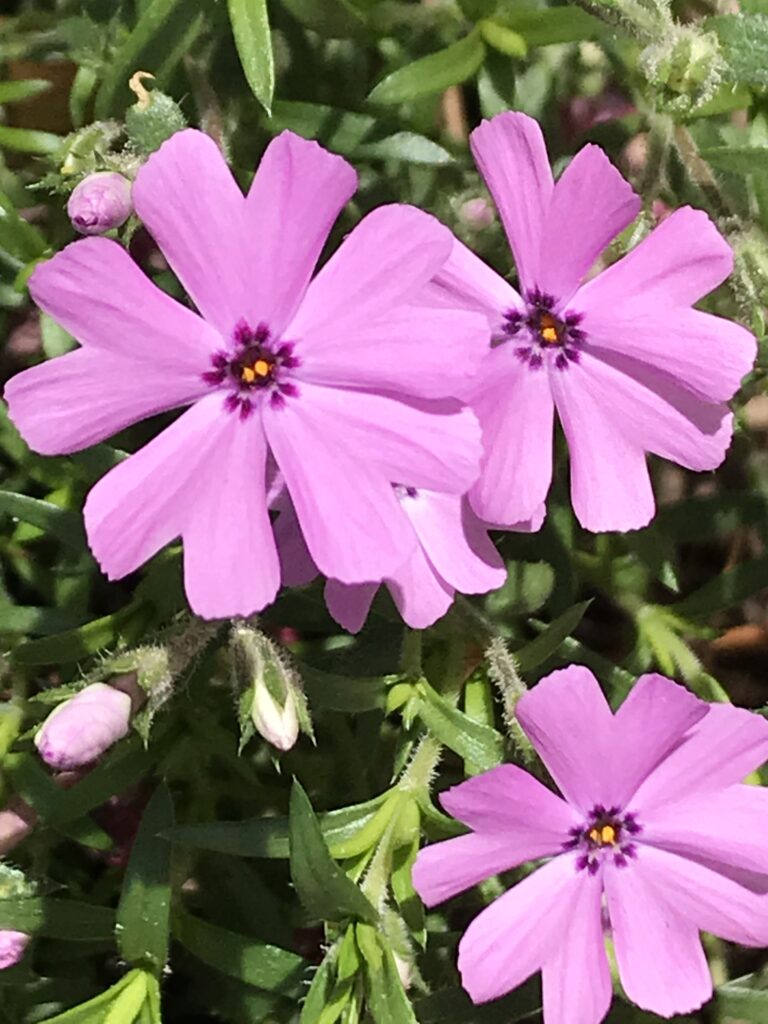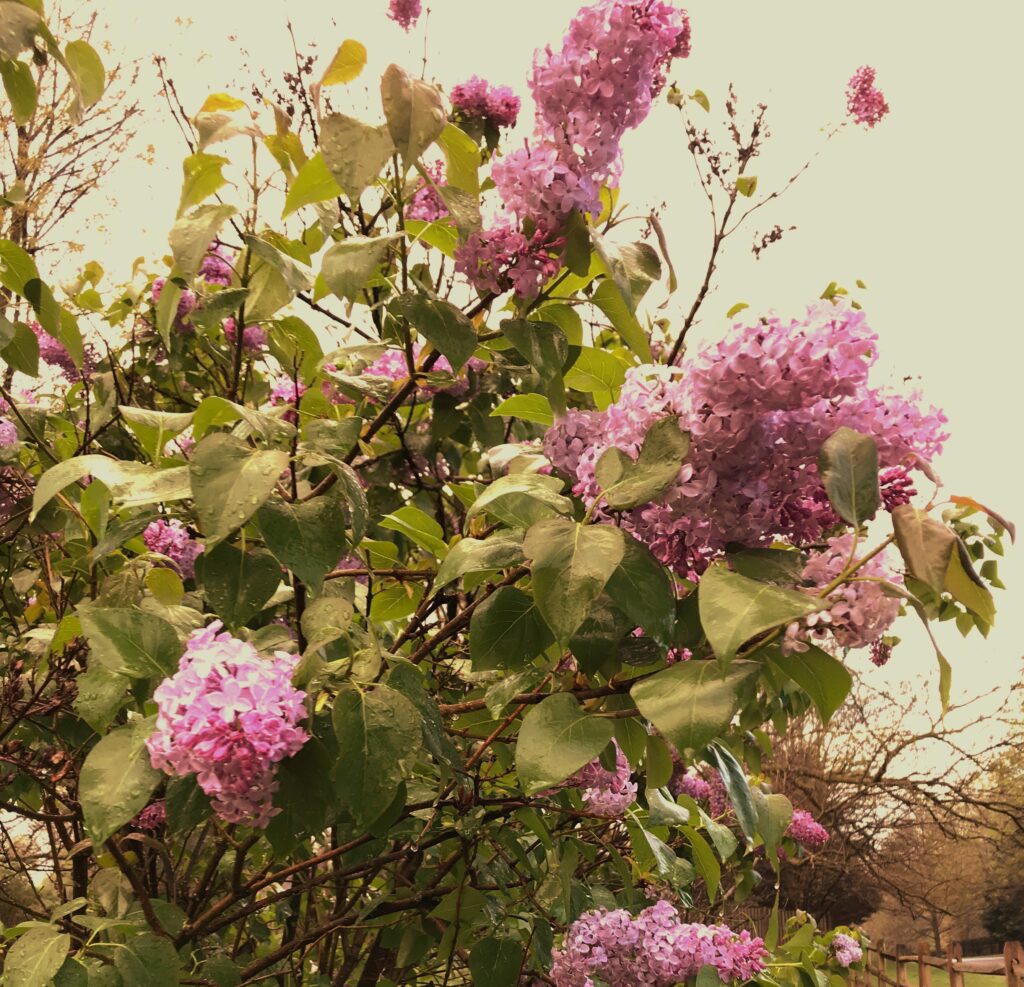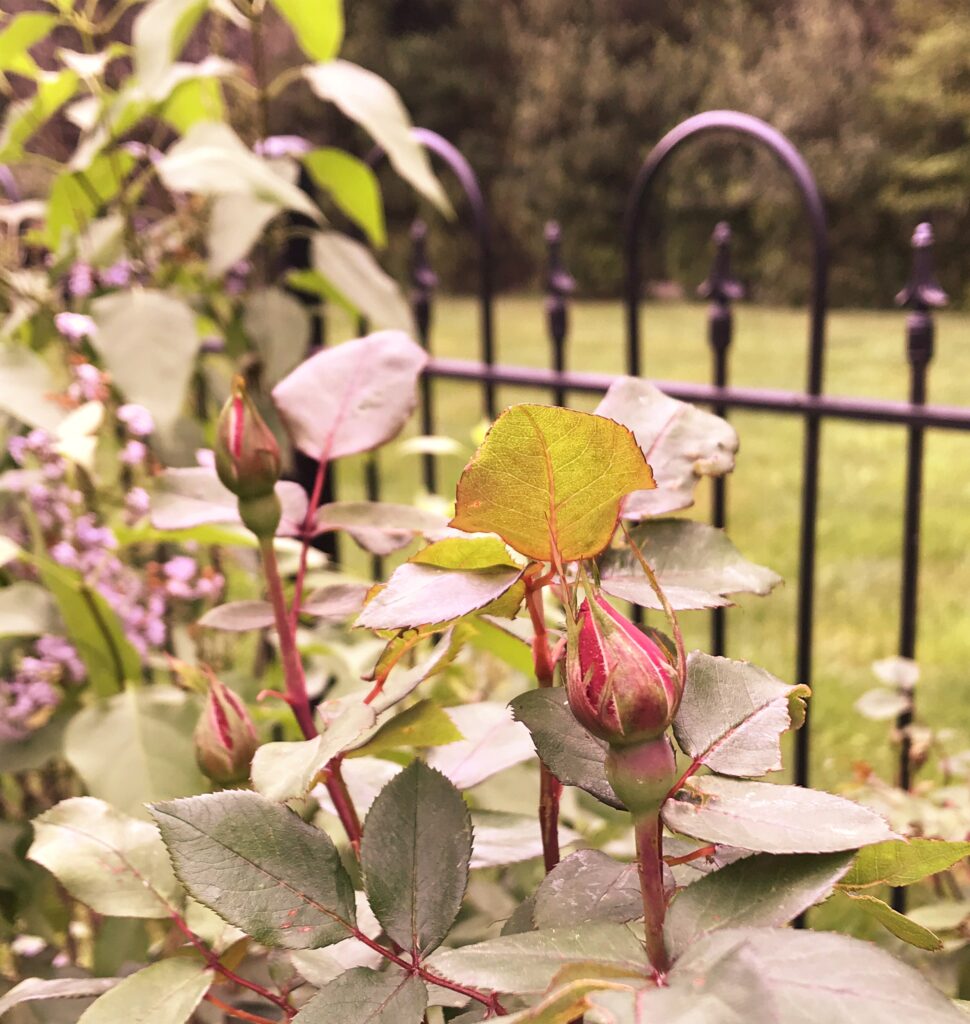As May begins, spring’s high quality production design continues unabated here in Northern Virginia. The season’s talented ensemble cast rarely misses a cue, despite unpredictable working conditions such as drastic shifts in temperature, a sudden hailstorm, and recent wild, gusty winds. The players function together beautifully, keeping the audience amused and all senses invigorated.
The Appalachian redbud by our back porch brought out a striking profusion of bright fuchsia jewel-like buds, just as we’ve come to expect.
Looking a bit like tiny pink chili peppers, the flowers glow with near iridescence in the afternoon sun.
The redbud takes an inventive approach to her adornment, sprouting small bouquets of varying sizes directly from her trunk.
The little sassafras tree in our front yard was damaged last year by a heavy branch that fell from one of the silver maples. Nevertheless, she produced the annual show of frilly pale yellow flowers. Their lemony scent is subtle yet pervasive.
The camellia tucked into a corner at my mother’s house played her part with exuberance. Her limbs were gracefully bowed down by an abundance of ruffled, boldly colored blossoms.
The taller, grander daffodils in our front-yard patch took their time in blooming, letting the miniature Tête-a-têtes set the stage and enjoy their time in the limelight. When the big girls arrived, they were elegantly dressed in their Cinderella ball gowns.
The azaleas, among the season’s dependable stars, are just past peak bloom. A coral pink variety is luminous in the early morning light.
As heart-shaped leaves replace the blooms on the redbud, the spent flowers fall onto the creeping phlox below.
Creeping phlox is known and admired for its carpet-like effect. Together, the many little flowers, popping out from wiry foliage, can create a lovely cascade over a low wall in a rock garden. But each bloom in itself is a miniature marvel. Each flower has five delicate, double-lobed petals and a center resembling a tiny star or snowflake, with a ring of double markings surrounding bright yellow stamens.
And then there are the lilacs, the signature flower and fragrance of mid-spring. I love lilacs. The petite, perfect, four-petaled blooms remind me of icing flowers my daughter and I used to squeeze out of a pastry bag to decorate cupcakes. I love the way they cluster together to form larger entities. Each lilac bush is composed of communities of small flowers working together. I’ve written before about my sentimental appreciation of lilacs. They carry me back to childhood and my grandparents’ beloved old Kentucky home. They remind me of living outside Princeton when my husband and I were newly married. They’re a token of a dear friend, long gone from this world. To me, they evoke home, happiness, and the warmth of belonging. When I realized that lilac leaves were sprouting from the long gray stems of a previously unidentified shrub in the front yard of our house twenty years ago, it was another sign that we had moved to the right place. That old lilac bush has had its ups and downs, and this is a down year. With luck and a substantial pruning, it may be revitalized, as has happened before. Two years ago, we planted another lilac in the back yard, and it has flowered beautifully. A third near our porch is a later blooming variety. A house surrounded by lilacs is truly home sweet home.
Spring’s final act will soon begin. All around, the roses are budding, preparing for their big scenes. The peonies will follow shortly. And this year, a special insect guest readies itself for an historic entrance. For the past seventeen years, Brood X cicadas have been waiting underground in the wings (and for their wings), rehearsing for the literal role of a lifetime. With each warm day, their emergence draws closer. The season’s dependable cast of unique characters will take it all in stride. The show must go on.
For an earlier post on a favorite flower, see Lilacs, Lyric Hall, and June Bliss, May 1, 2012.

